Past winners – Clunies Ross Technology Innovation Awards
The Clunies Ross Technology Innovation Awards recognises contributions by dedicated individuals, or teams, who have shared their vision and knowledge with others to apply technology for the benefit of Australia, and beyond. Past winners of the Clunies Ross Technology Innovation Awards include eminent Australian technologists and engineers. From 2017 to 2022, the Awards were historically comprised of separate Entrepreneur, Innovation and Knowledge Commercialisation categories which have been combined into the single Technology Innovation Awards we have today.
The Clunies Ross Entrepreneur of the Year Award (2017-2022) recognised an individual who has played an integral role in the discovery and translation of a major technology-based product or service that has led to financial success and demonstrated impact for Australia, and in which they have personally had a significant input in the inventorship and/or development of the technology.
The Clunies Ross Innovation Award (2017-2022) recognises an individual or small team responsible for the discovery, development and adoption of a technology that has significantly improved societal or industry capabilities.
The Clunies Ross Award for Knowledge Commercialisation (2017-2022) recognises an individual or small team responsible for the discovery, development and adoption of a technology and for sharing their knowledge leading to successful commercialisation.
2025
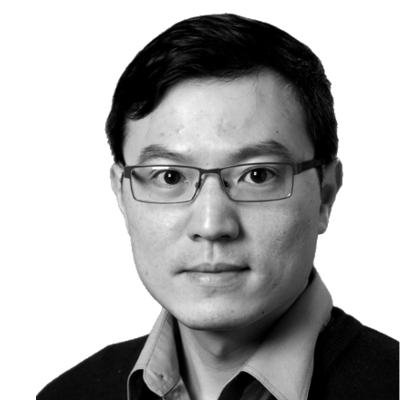
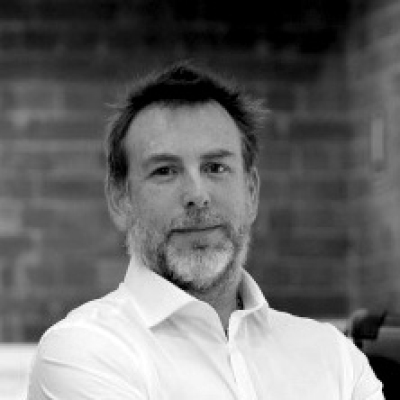
2024
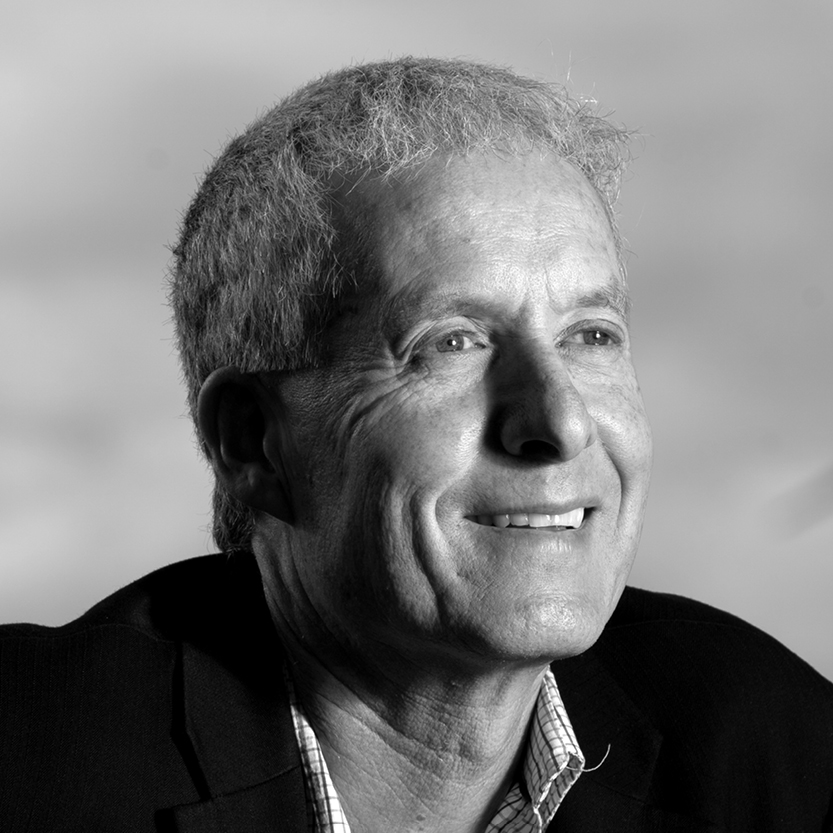
He has also led the creation of a comprehensive global atlas of about one million potential sites for off-river pumped hydro energy storage with combined storage potential equivalent to about one trillion electric vehicle batteries. A Professor of Engineering at the Australian National University, Andrew’s record of entrepreneurship, innovation and outreach is exemplary. Andrew is one of Australia’s top renewable energy researchers known by millions.
2023
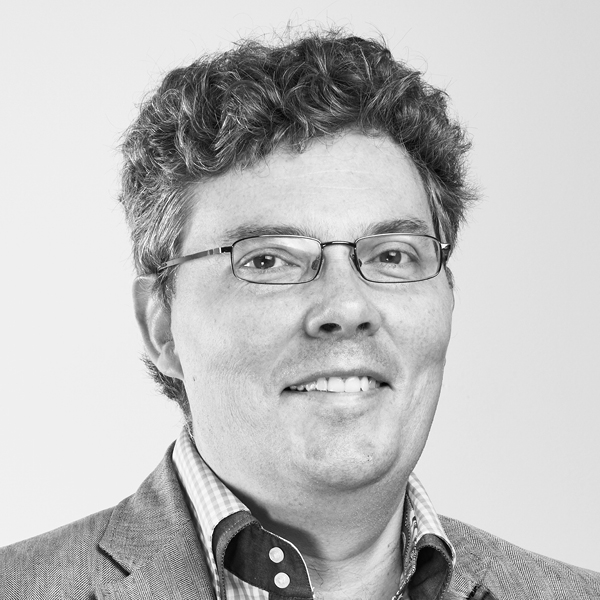
In the mining industry, quantifying the concentration of a target element in a sample is crucial. In developing PhotonAssay™, James overcame many of the safety, environmental and efficiency problems of older, more harmful and hazardous detection methods.
PhotonAssay™ technology counts atoms inside rocky samples in a matter of minutes, whereas previous assaying processes could take weeks. Furthermore, the innovative approach minimises health risks for operators, and eliminates toxic waste, while also halving energy consumption and carbon emissions compared to existing methods – making it safer for workers, and better for the planet.
James developed PhotonAssay™ while working at CSIRO, and left his research role to commercialise the technology. He co-founded the mining technology start-up Chrysos Corporation Ltd, where he continues to lead the science, engineering and product development teams. In just six years, as Chrysos’ Chief Technology Officer, James has overseen the growth of PhotonAssay™ from its first functional unit to a fleet of commercially operating units across three continents running approximately 300,000 samples per month.
2022

Saeid’s research has been translated into defence and civilian applications. He is particularly well known for his brainchild, the universal motion simulator, a world-first haptically-enabled robotic motion platform that functions as a vehicle or aircraft simulator for contested environments.
The simulator allows users to experience situations in their entirety, including full range of motion that can be adjusted to suit many forms of training that aren’t possible in reality. Training using advanced virtual reality technology is useful for engineering, military, medicine, and education applications.
Saeid heads Deakin University’s Institute for Intelligent Systems Research and Innovation. He consults to government, and civilian and defence industry in Australia, the USA, and Europe and has previously consulted to NASA and NATO.

Veena is the Director of the UNSW Sustainable Materials Research and Technology (SMaRT) Centre creating innovative solutions for the world’s biggest waste challenges. The Centre is now doing its next generation of Green Steel research involving using additional waste resources usually destined for landfill, including coffee grounds and problematic plastics, as coke and coal alternatives that also contribute hydrogen to further enhance the steel production process.
Veena and SMaRT are also commercialising their breakthrough MICROfactorieTM Technologies that transforming diverse wastes – including textiles, glass and plastics – into value-added products such as high-grade filaments for 3D printing and Green Ceramics for the built environment. MICROfactorieTM. The ceramics technology was one of only ten innovations globally featured at UNESCO’s 2020 Netexplo Forum.
A hallmark of Veena’s stellar career has been her ability to collaborate with a wide range of industry, government and research partners, resulting in many breakthroughs that are fit for purpose and are being commercialised to meet real world challenges.
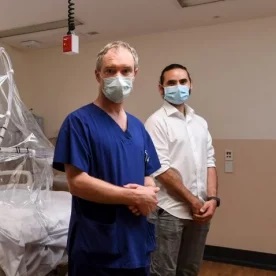
In March 2020, Forbes contacted Jason asking for assistance in protecting the safety of healthcare workers attending to patients infected with COVID-19. Forbes’ idea was for something like a pram’s rain hood that could be placed over the head and torso of an infected patient to contain the virus particles.
The Medihood is the result of this unique collaboration. It protects healthcare workers and nearby patients from COVID-19, and other infectious respiratory diseases, by containing and filtering the infectious air expelled by a patient, while also improving patient outcomes.
Despite the timeframe of less than 12 months, the scientific rigour expected of high quality technological science and engineering research projects was maintained.
Forbes and Jason directed a team including colleagues from the University of Melbourne departments of Mechanical Engineering, Earth Sciences, and Infectious Diseases, along with medical, nursing, and physiotherapy specialists from Western Health, and additional experts from CSIRO’s Oceans and Atmosphere team and the Doherty Institute for Infection and Immunity.
Melbourne-based flag manufacturer Evan Evans was appointed product development and commercialisation partner, convinced of the efficiencies it could achieve by re-purposing its flag-making technology to manufacture the Medihood.
The multi-award-winning Medihood is already being used in more than 145 hospitals around Australia and has also been adopted internationally.
2021
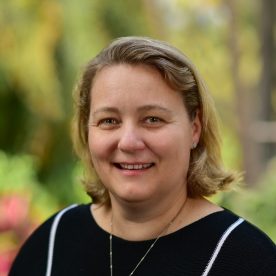
She is the founder and Chief Executive of Everledger. At Everledger, Leanne Kemp created an independent platform leveraging blockchain technology which provides a secure and permanent digital record of an object’s origin, characteristics and ownership across many global supply chains and industries. She invented and patented the technologies which have proven to be a game changer for Everledger, impacting a number of industries helping to build confidence in claims of origin, legality, environmental protections and human rights.
Leanne Kemp has also just completed two terms as Queensland’s Chief Entrepreneur where she shared her experience and knowledge with thousands of start-up businesses and SMEs. She is an appointed advisor for the OECD, the United Nations, the World Economic Forum and a Director for the World Trade Board.

Professor Wong designed and developed Early Fault Detection technology which is able to detect and locate potential threats to power grids, allowing these threats to be addressed before the grid fails, protecting against potential catastrophic outcomes.
Since being patented and introduced to the market, the technology has been taken up by companies in Australia, Asia and North America. It’s detected numerous failing high-voltage conductors and prevented potential bushfires and electrocution.
Ninety-five per cent of the Early Fault Detection product is manufactured locally in Victoria, generating high-tech and advanced manufacturing jobs.
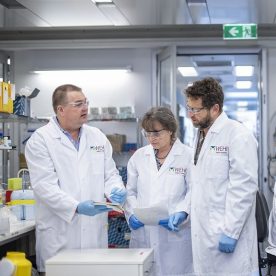
Cancer is a leading cause of death worldwide, accounting for nearly 10 million deaths in 2020. It kills through unrestrained and abnormal cell proliferation. The team from the Walter and Eliza Hall Institute and Monash University has developed a new class of inhibitors which arrest that proliferation, without causing DNA damage.
A licensing deal with a major pharmaceutical company, has the teams’ discoveries at its base with a drug that has now entered Phase 1 clinical trials.
2020
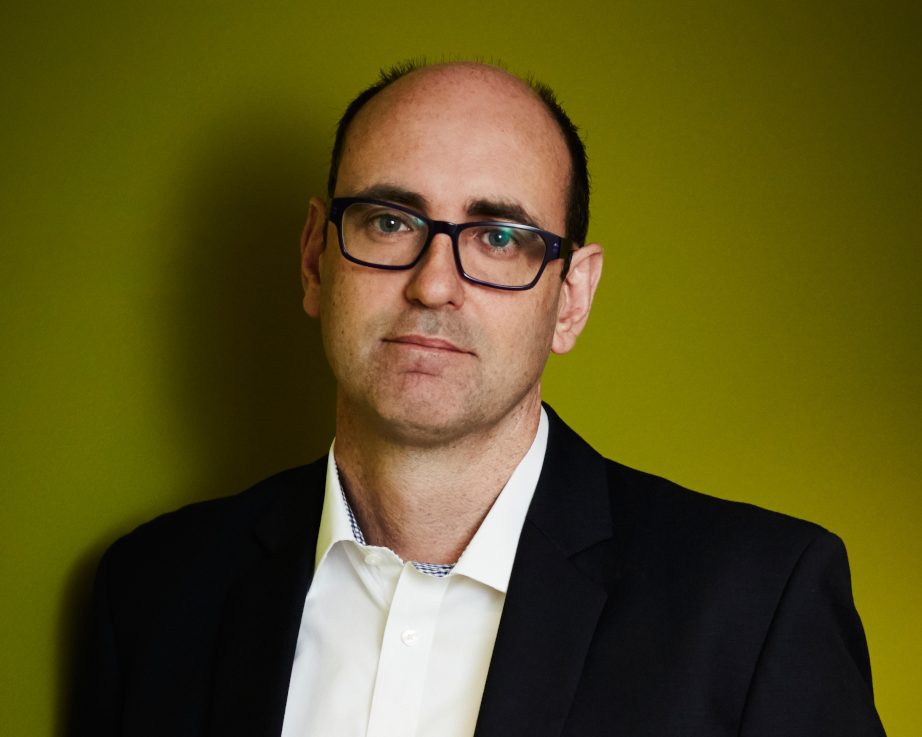
Mark recognised the importance of Moxidectin – an intestinal worm treatment for domesticated animals – for treating neglected infectious diseases in humans. Mark found funding, re-established manufacturing, and won approval for human use.
This year, additional human trials with more than 13,500 people will commence to demonstrate Moxidectin’s importance and win approval to use the drug to treat and eliminate onchocerciasis, or river blindness – the second most common cause of blindness due to infection.
The Clunies Ross Entrepreneur of the Year Award recognises an individual who has played an integral role in the discovery and translation of a major technology-based product or service that has led to financial success and demonstrated impact for Australia, and in which they have personally had a significant input in the inventorship and/or development of the technology.
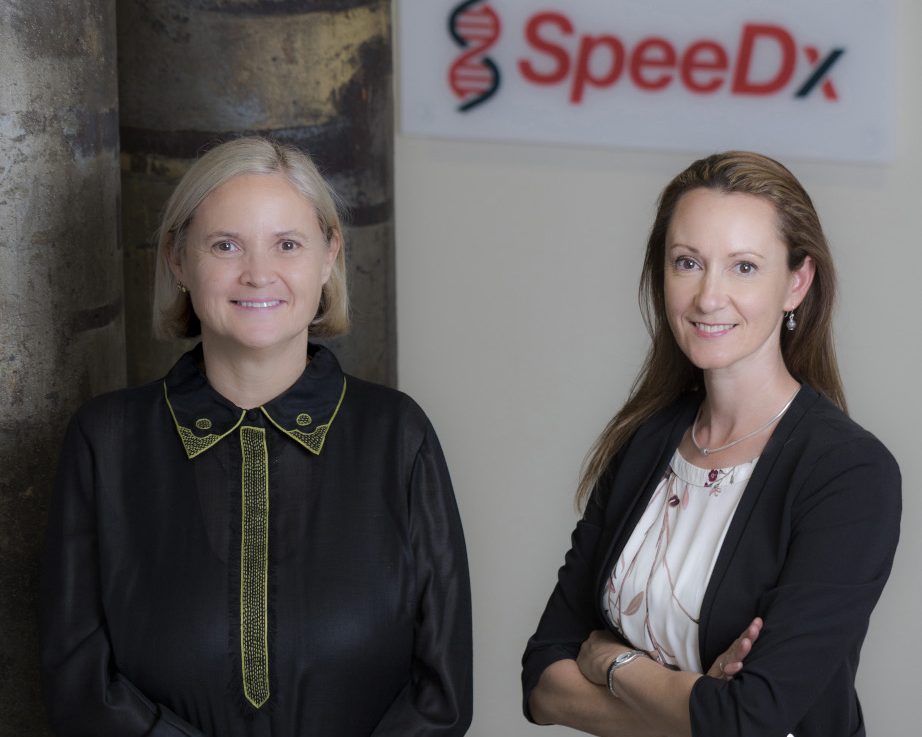
Together, Dr Todd and Dr Mokany created a new molecular ‘lego’ that is opening the door to personalised clinical diagnostics.
They’ve founded a successful company – SpeeDx – to roll out the technology which helps doctors choose personally targeted treatments.
They combine a profound, deep knowledge of molecular DNA and RNA-based detection – with flair and entrepreneurship, to develop their own inventions into fully-fledged products made in Australia and sold nationally and around the world.
Their products are fundamentally changing the way in which doctors work and patients heal.
The Clunies Ross Innovation Award recognises an individual or small team responsible for the discovery, development and adoption of a technology that has significantly improved societal or industry capabilities.
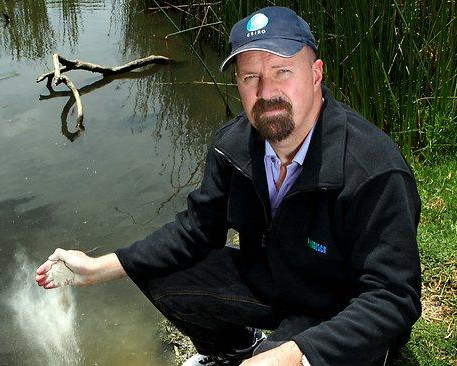
Dr Grant Douglas from CSIRO Land & Water has developed and patented a new phosphorus-adsorbent clay, Phoslock™, which addresses the source of harmful algae.
Dr Douglas has proved Phoslock™ effectively removes phosphorus without any lasting effects or adverse impact on the environment.
Now, the product is used in more than 20 countries to control and prevent algal blooms. And Phoslock™ is the core product for a $750M ASX-listed company.
The Clunies Ross Award for Knowledge Commercialisation recognises an individual or small team responsible for the discovery, development and adoption of a technology and for sharing their knowledge leading to successful commercialisation.
2019
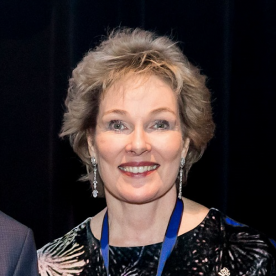
She enables Ego Pharmaceuticals to improve people’s lives through the science of healthy skin with products that are based on strong science. This, in turn, has driven growth in demand from consumers and patients across 24 nations, with a compound average annual growth rate of 12 per cent over 30 years.
To match this growth, Dr Oppenheim has led continuous growth in production capacity in the world-class pharmaceutical manufacturing plant that she runs, with 10 expansions, most including installation of complex new equipment. The current production plant in Braeside, Victoria, is now fully equipped with state-of-the-art high-technology machines.
In 2016, Ego Pharmaceuticals won the Victorian Exporter of the Year award.
Dr Oppenheim is committed to treating and preventing skin problems. Some skin problems may appear minor, but improvements can be life-changing.
For example, QV Skin Lotion used twice daily reduces skin tears in the elderly in aged care homes by up to 51 per cent. In one typical case, 40 per cent of residents experienced skin tears, with the mean cost of treating one skin tear estimated as $488. Reducing skin tears significantly improves lives, while significantly reducing costs of aged care facilities.
The QV Intensive Moisturiser helps improve eczema for children; it in turn reduces their hospital stay and gets them back to school and friends faster.
Dr Oppenheim is now leading Ego’s transformation to industry 4.0 – to have all machines connected, enabling interconnectivity and transparency of reporting.

Their development of technology that can accurately characterise cells and modules – within the manufacturing line and in fractions of a second – is regarded as a gamechanger.
Protected by more than 40 patents, photoluminescence imaging technology from BT imaging Pty Ltd has been adopted by all Tier 1 manufacturers (and virtually all leading manufacturers of solar panels) globally, including the world’s five largest module manufacturers.
The use of the technology lifts the quality of product, lowers cost and makes proliferation of renewable energy easier.
Their innovation in conception and design, and their advancement of photovoltaic characterisation technology to the point where it can simply be plugged into current photovoltaic manufacturing infrastructure, clearly demonstrates the research excellence, dogged dedicated and industry-ready thinking that defines the very best of engineering achievements.
The innovation developed by Professor Trupke and Adjunct Associate Professor Bardos has had a global impact on the photovoltaic sector, directly enabling reduced manufacturing costs and therefore increasing total use.
As the world enters a time in which renewable sources of energy will move from desirable to critical, photovoltaics will play a leading role in this revolution.
Australia is an established leader in photovoltaic research that, over many years, has resulted in step-change advancements in solar capability and efficiency, as well as cost-effectiveness in manufacturing. The technological advancements in characterisation achieved by them represent the future of Australia’s continued dominance in this arena.

The Australian spin-out company he founded, Elastagen, was acquired by Allergan, one of the world’s 20 largest biopharmaceutical companies, in one of the largest transactions ever completed in the Australian life science sector.
The large trade sale of Elastagen will bring direct financial benefit to Australia, delivering tax revenue to the government and returning a substantial portion of the USD$260 million proceeds to Australian superannuation funds and venture capital firms that took the risk of investing in early-stage technology commercialisation.
This will have a multiplier effect, increasing confidence among venture capital firms, funds and venture-capital backed companies in investing in the next generation of life science technologies.
This success story is also a win for government policy. For many years federal and state governments have been attempting to increase Australia’s capacity for commercialising innovation through university-industry partnerships. The joint endeavours of Professor Weiss and Elastagen are an exemplar to the world of what our research and biotechnology sectors can achieve.
Their success story has been used by Austrade to encourage overseas investment, by the Department of Industry, Innovation and Science as a case study, and by the NSW Ministry of Health to promote the success of its Medical Devices Fund, which helped fund the work.
Within Australia the story has helped educate the public about the tangible benefits of scientific research, and, incidentally, government investment in it. Professor Weiss has given scores of interviews and featured in hundreds of national and regional media stories, including in every major TV, radio and newspaper outlet.
Public awareness of his scientific achievements received a substantial boost earlier this year when he was made a Member of the Order of Australia.
Professor Weiss was unfortunately unable to attend the event due to illness. He was represented on the night by one of his PhD students, Richard Wang.







